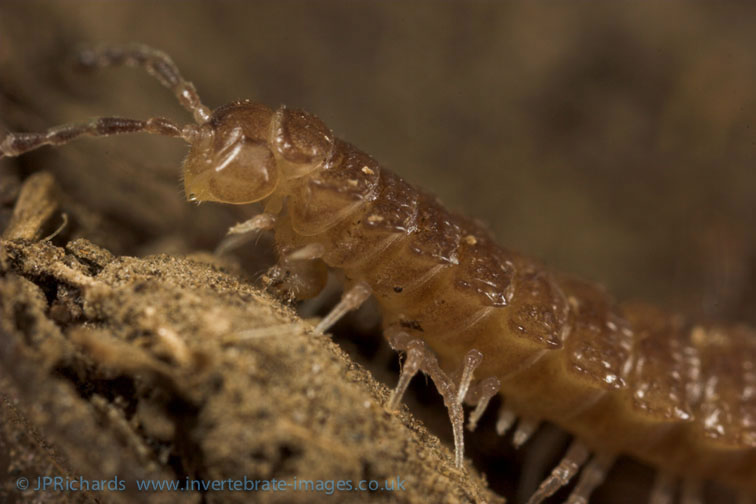Polydesmus coriaceus Porat, 1870
Synonyms
Polydesmus gallicus Latzel, 1884 (as used in Blower, 1985).
Status:
GB IUCN status: Least Concern
ID Difficulty
Identification
It is not possible to reliably identify Polydesmus millipedes without examination of male gonopods or female epigynal structures. Immatures cannot be identified.
Care needs to be taking to separate this locally common species from other widespread species such as Polydesmus angustus, Polydesmus denticulatus and Polydesmus inconstans.
Distribution
This is a common species in Britain, south of a line from the Humber to the Mersey, and in Ireland. It is uncommon in northern England and there is only one record from Scotland.
Polydesmus coriaceus has an Atlantic distribution extending southwards through Belgium and western France to Iberia, the Azores and Maderia. Britain and Ireland are at the northern limit of this distribution. This species has been introduced into the USA and the Cape Verde Islands (Kime, 2001).
Habitat
It has been recorded in almost any habitat where millipedes occur but analysis of the recording scheme habitat data suggests strong associations with cultivated land, waste ground and grassland. Kime (2004) reported it was common in a variety of habitats in northern Spain but associated it with wet conditions, even in more open habitats. Blower (1985) also noticed a link with damp situations. The habitat analysis shows a very strong association with clay soils and strong negative relationships with non-calcareous and sandy soils. Kime (1978) noted this preference for clay soils but not an aversion to non-calcareous soils. Van Den Haute (1999) found the species on sandy and loam soils in Belgium but Kime (2004) stated that it occurred on soils other than clay where restricted drainage or a high water table produced damp conditions.
Phenology
Kime (1995) noted that animals may be active all year round in milder parts of Britain and Ireland. Adults have been recorded in all months of the year but most frequently in the spring.
This species account is based on Lee (2006).
Links
MilliBase - Global catalogue of Millipedes: https://millibase.org/aphia.php?p=taxdetails&id=938136





